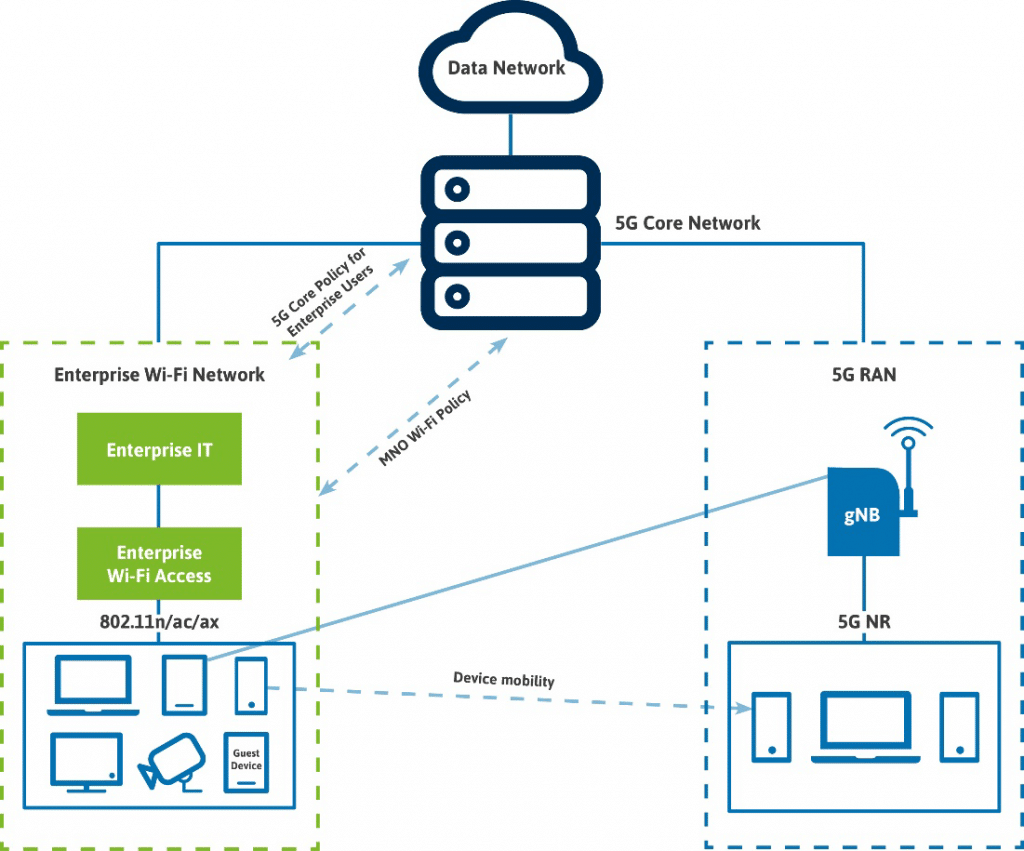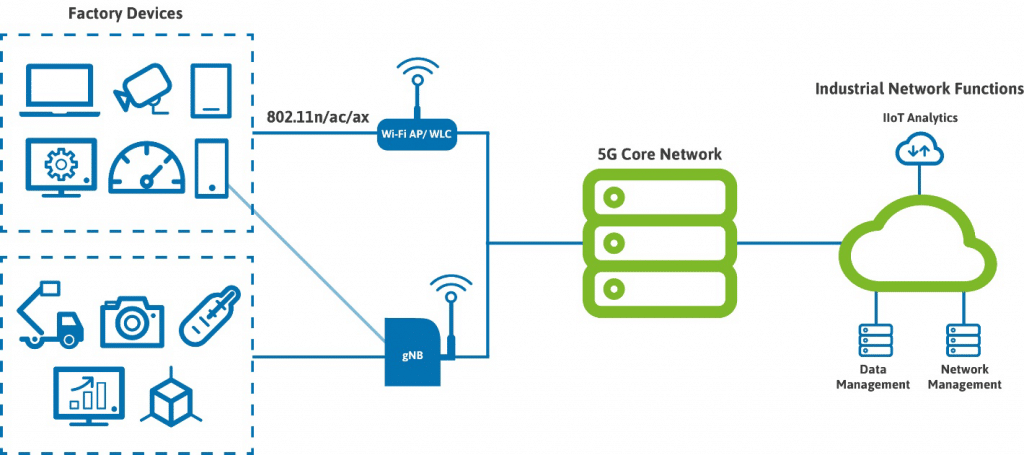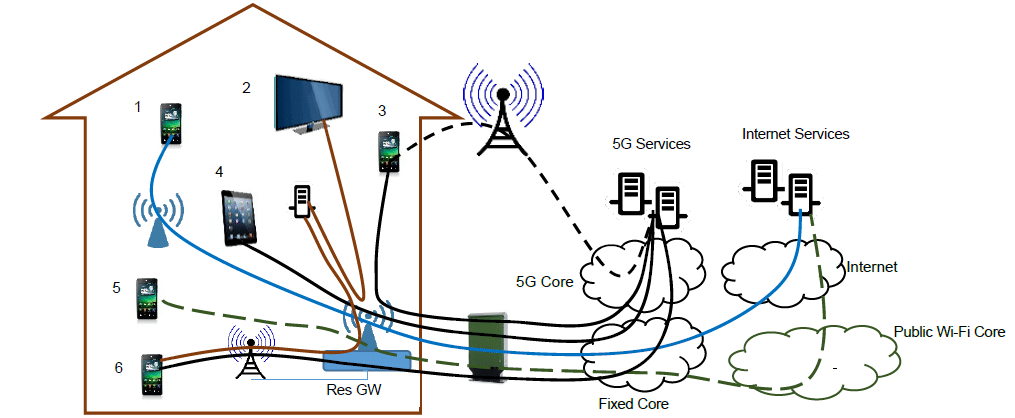How Will Wi-Fi 6 and 5G Work Together? (Part 2)
Posted by Admin on Sep 2, 2020

This week, we continue our coverage of the potential future convergence of Wi-Fi 6 and 5G network technology. While the two similar technologies coexist today, convergence will provide a better overall user experience in several common use cases in the future, as laid out in a recent white paper from the Wireless Broadband Association (WBA) and Next Generation Mobile Networks Alliance (NGMN).
In this article, we will summarize three of these cases and highlight the critical advancement required for full convergence in each case.
Use Case 1: Enterprise
One of the biggest challenges to convergence in an enterprise network is the gaps in cellular coverage for indoor environments. This is particularly notable in the case of 5G, as its frequency band can struggle to penetrate certain interior walls and other permanent obstacles. Therefore, to ensure a seamless user experience, it becomes imperative that users can access 5G Core services over the Wi-Fi network, as depicted in the example deployment diagram below:

However, this convergence is not without complications. One of the prevalent features of Enterprise Wi-Fi networks is the set of restrictions placed on the network’s use (e.g., accepting Terms of Service before accessing the network, regulatory compliance measures, or Policy Control measures that limit content access or aggregate throughput). These policies also tend to be very specific to each organization’s needs, so a one-size-fits-all approach from a 5G operator would likely be insufficient compared to something like regulatory compliance management. Therefore, it may become necessary for the mobile network operator to slice the network, allowing Enterprise teams to achieve the requisite level of policy control specificity.
Use Case 2: Industrial
The factory automation of the “Fourth Industrial Revolution” brings great promise for unprecedented flexibility and efficiency in the factory environment. It knits together a broad spectrum of emerging technologies, including business data analytics advancements, augmented reality, advanced robotics, and much more. Given the varieties of devices and technologies at play, the optimal configuration will usually demand both 5G and Wi-Fi connectivity.
Therefore, both communication technologies must work together seamlessly. The factories we’re examining today have the most stringent network performance requirements. Robotics and other automated factory equipment require ultra-low latency, high reliability, and high service availability. ServiceMax estimates that each hour of unplanned downtime can cost factory operators an average of $250,000!
The diagram below depicts a potential deployment in a factory setting:

Use Case 3: Residential
Convergence experiences are not confined to only professional environments. While residential customers may not have the stringent policy or performance requirements that enterprise and industrial network operators have, it is usually the convergence that directly affects the widest range of customers. While most homeowners use Wi-Fi to deliver connectivity, some may choose to augment their cellular services with femto-cells and/or macro-cells.
As with factory settings, homeowners (particularly those with more “smart home” connectivity) may employ such a broad range of end-user devices with a similarly broad range of latency, reliability, and availability requirements. It is still important for everything to work together, and for the right level of service to be delivered seamlessly across technologies. An example of a converged home network is depicted below.

Champion ONE offers a wide range of products to optimize your 5G or wireless networks. For more information about particular solution sets, contact us today.